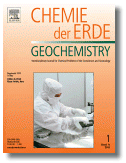Quick Views of Big Advances
Looking After and Preserving NASA's Extraterrestrial Samples
Materials from space have a superb home on Earth at the Johnson Space Center (JSC) in Houston, Texas. The curators and staff in the Astromaterials Acquisition and Curation Office at JSC have the enormous and enviable responsibility for protecting, preserving, and distributing extraterrestrial samples. You might be surprised at the variety of materials and where they've come from: Comet particles; cosmic dust; meteorites from asteroids, the Moon, and Mars; rocks and soils from the Moon; and samples of the solar wind. |
- Lunar rocks and soils collected by the Apollo astronauts
- Meteorites collected on NSF-funded expeditions to Antarctica; these are samples from asteroids, the Moon, and Mars
- Cosmic dust collected by high altitude NASA aircraft
- Solar wind atoms collected by the Genesis spacecraft
- Comet particles collected by the Stardust spacecraft
- Interstellar dust particles collected by the Stardust spacecraft
![]() (pdf version)
(pdf version)
See:
Allen, C., Allton, J., Lofgren, G., Righter, K., and Zolensky, M. (2011) Curating NASA's Extraterrestrial Samples--Past, Present, and Future. Chemie der Erde-Geochemistry, vol. 71(1), p. 1-20, doi: 10.1016/j.chemer.2010.12.003. [ NASA ADS entry ]. Also see JSC Astromaterials Acquisition and Curation Office and PSRD article Celebrated Moon Rocks. Also added: Curating NASA's Extraterrestrial Samples in the July 16, 2013 issue of EOS, American Geophysical Union.
Written by Linda M. V. Martel, Hawai‘i Institute of Geophysics and Planetology, for PSRD.
|
|
[ About PSRD | Archive | CosmoSparks | Search | Subscribe ] [ Glossary | General Resources | Comments | Top of page ] |
